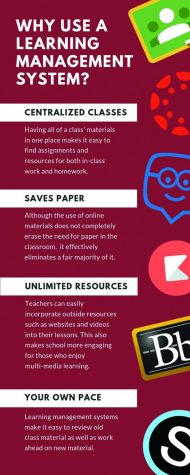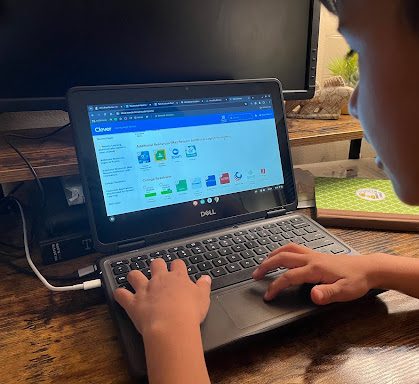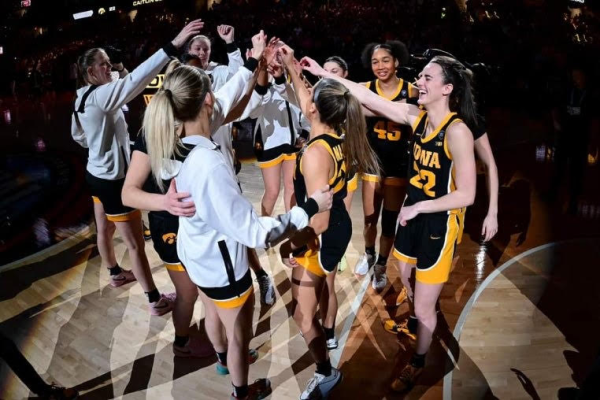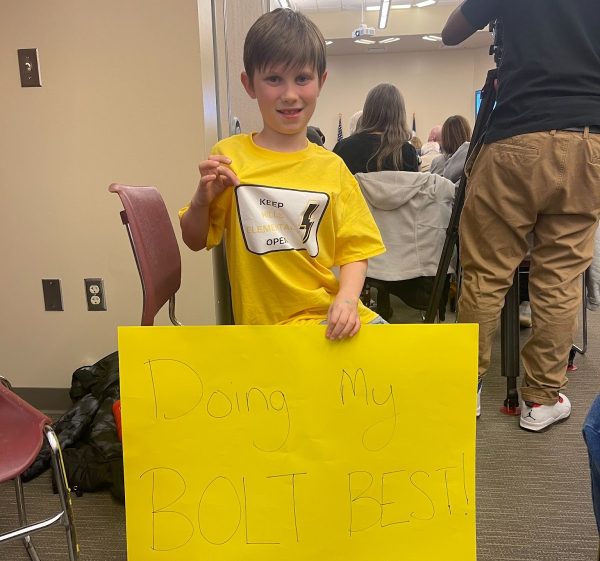A Blank Canvas
A look at Liberty High’s initiative to integrate into a single learning management system.
November 11, 2018
Canvas and Google Classroom are two different online learning management systems. They act as hubs for digital class materials, pushing students further into the future of education with the Internet. Though both are fundamentally the same, their differences in structure have caused a divide in student and teacher opinions.
Unlike Google Classroom, however, Canvas is not free. In fact, the ICCSD pays per-student for students to use Canvas. And while teachers at City and West High are required to use Canvas as their learning management system, Liberty’s teachers are still split between the two. This was Principal Scott Kibby’s doing, as he felt that allowing teachers to choose between the two platforms would help them to better adjust into Liberty’s starting years. However, it will not be long before Liberty teachers will be required to use Canvas as well, and not everyone is happy about it.
“To me, Google Classroom is just more user-friendly,” said Malyssa Oblander, a Spanish teacher. “I think it integrates better [with our schools] because we use Google-everything.”
Similarly, Dr. Nicholas Borchert, an English teacher, believes that the structure of Google Classroom is better fitting for a high school environment.
“[Google] Classroom is set up timewise so the newest thing is always on the top whereas Canvas is hierarchical. And I think that because we meet every day in high school, the way Google Classroom is set up makes more sense,” said Borchert. “I can just pump something to the top and say ‘go to Google
Classroom,’ and whatever is facing you there is probably what I want you to find.”
However, Google Classroom is not without its faults. For one, the lack of categorical organization can make finding old resources for accumulative tests such as AP exams a tedious task for students. Beau Leavenworth, sophomore, is familiar to this struggle.
“You really have to scroll down and down and down if you’re trying to find something, especially if your teacher uses Google Classroom a lot,” said Leavenworth.
And while Melissa Nies of the Social Studies department likes how responsive Google is to people’s feedback, she dislikes how often changes are made to the platform.
“Because it changes so often from year to year, teachers have to reteach [themselves] the platform,” said Nies.
There may also be issues with the platform that are deeper than what meets the eye, which is why Borchert is concerned about the ethicality of using free platforms like Google Classroom.
“Google is collecting data from anything students upload and post there, and that may not be a problem for [students], but it makes me nervous as an educator that we don’t know exactly how Google is using all that data,” said Borchert. “Canvas at least is an enclosed entity and they’re not selling your info.”
Canvas, being a platform the school district pays to use, has many more features than Google Classroom. On Canvas teachers can administer quizzes, host discussion threads, and sort their resources and assignments into modules for students to easily find later. Canvas is also used at the University of Iowa, making the transition into college easy for students who choose to attend that school.
Having used Canvas as both a high school teacher and as a student in his Master’s program, Brad Borrison of the English department feels comfortable using Canvas to its fullest capabilities.
“I’m way more organized with it now after having classes and seeing how professors organize their materials,” said Borrison.
Not everyone finds Canvas’ multitude of features to be a good thing, however. Some people find the basics to be hard enough. For English teacher Kathryn Jacobson, the lack of user-friendliness has made her stay far away from the platform entirely. Canvas remains confusing for her despite her attempts to learn how to use it with YouTube tutorials.
“I find it to be very complicated and cumbersome,” said Jacobson. “It’s just such a different setup. I mean, I am so confused [by] it, I don’t even know how to articulate my confusion.”
While teacher usage between Google Classroom and Canvas is close to evenly divided, it’s the students of Liberty High that have to deal with the results of that rift. Having their class materials divided between the two platforms is more annoying for some students than others.
“I find it’s kind of confusing and I wish they would make up their minds. It’s not terribly inconvenient as long as you memorize which [teacher uses] which,” said
Leavenworth.
Stefania George, senior, shares the same sentiments.
“It’s very annoying [to] not [have] the same way to access and turn in all of my work,” said George.
Luckily for students who are irritated by the divide, Liberty will soon join West and City in a Canvas-only school environment. Although Kibby does not regret giving teachers the initial option to choose between the two platforms, the goal is for all teachers to be using Canvas by next school year.
One of the most prominent factors fueling a complete transition into Canvas is the fact that it costs money to use.
“If teachers aren’t all using Canvas and we’re paying for it on a per-kid basis, we’re not getting the full value of it,” said Kibby.
Leavenworth feels the same way about the issue.
“If we are wasting money, then I feel like that’s something that should be fixed… We are a school district that’s very fortunate [to have] a lot of money,” said
Leavenworth. “We paid for it for a reason so I feel like we should just suck it up and deal with it.”
George thinks it would be better if we used Google Classroom and spent the Canvas-money on something else entirely.
“I want to be able to spend our money on something that everyone will like and use, and obviously not everyone can be happy about everything, but spending money on useless things is useless,” said George. George would rather that the school district uses this money to fund more impactful things such as increased assistance to low-income students.
Naturally, teachers who dislike Canvas are far from happy about the future of the platform in Liberty.
“I hope this change does not go into practice until after I retire, so just hold that thought for 10 years,” said Jacobson.
Leavenworth believes that the general negative attitude towards Canvas is a result of lack of exposure to the platform.
“I just think a lot of the reason people don’t like it is because it’s different from what they’re used to. And I mean, change is hard, and it’s not a great degree better, so I understand why people don’t immediately want to change their ways,” said Leavenworth. But Jacobson argues that lack of exposure is not the issue.
“I know people who have used it a long time and they’ve all said, ‘no, Google is easier,’” said Jacobson.
A full transition into Canvas will require patience and effort from both students and teachers. For teachers who are not familiar with Canvas, time must be spent learning the program. To help teachers learn how to use Canvas, the school district has provided multiple optional workshops, most of which were during professional development days. However, these aren’t necessarily helpful to all teachers.
“One hour in a crowded room with a bunch of other people who don’t get it,” said Jacobson, describing her experience attending the workshops. As a self-proclaimed slow learner of technology, Jacobson said she would only be able to learn Canvas with 1-on-1 help where she can learn at her own pace.
Though no workshop will be provided for students, students must also become familiar with Canvas in order to be successful with their classes.
Overall, the long-term effect of transitioning completely into Canvas “might just make a few small things take a few less seconds,” according to Leavenworth. Change can be scary, especially when any mistakes made will potentially impact the education of students.
“As a teacher myself, as the son of a mom who’s a teacher and a person who has a brother who’s a teacher, I know that teachers are often times very resistant to change because we have something that’s worked for a duration of time,” said Borrison. “Changing anything is difficult, but I hope that teachers [are] flexible and adaptable.”
Not everybody will be happy when Liberty inevitably shifts into Canvas, and that is to be expected. But whether we use Canvas or Google Classroom, the future of education will continue to expand using these platforms for many years to come.











